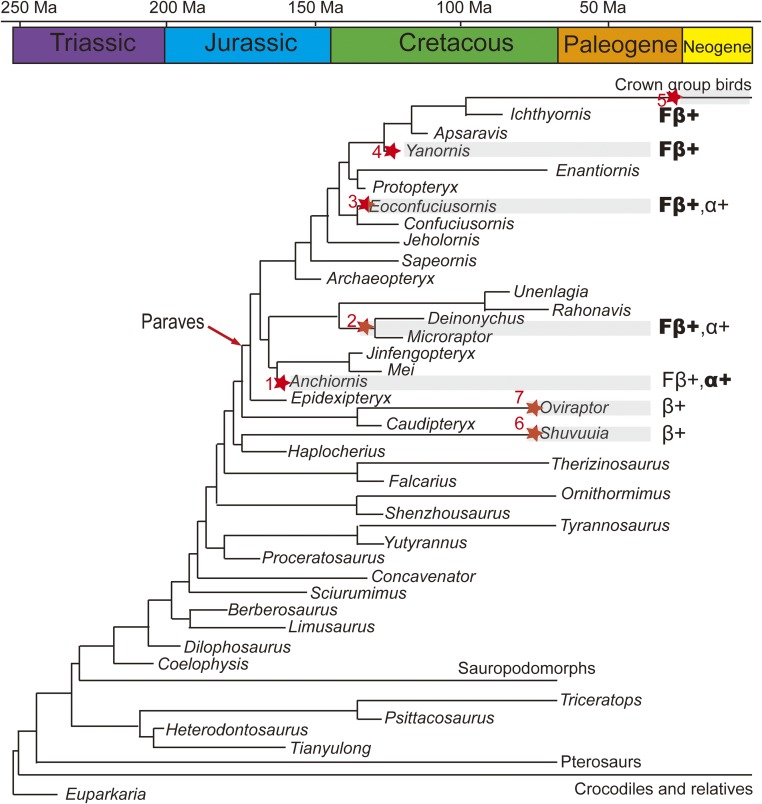Fig. 5.
Time-scaled evolution of molecular composition and ultrastructure of feathers within a simplified Mesozoic avian and nonavian phylogeny (38), suggesting that the Anchiornis feather were composed of both feather β-keratins and α-keratins, but dominated by α-keratins, unlike feathers from younger fossils and mature feathers of extant birds, which are dominated by β-keratins. Filled stars showing the distribution of tested fossil feathers and related integumentary tissues used in this study: (1) Anchiornis (STM 0–214), (2) Dromaeosauridae indet. (STM5-12), (3) Eoconfuciusornis (STM7-144), (4) Yanornis (STM9-5), (5) Isolated flight feather (DY 1502006), (6) Shuvuuia deserti (IGM 100/977), and (7) Citipati (MPC-D). β+, positive reaction to the general β-keratin antiserum; Fβ+, positive reaction to the antiserum specific feather β-keratins; α+, positive reaction to the anti-pan cytokeratin antiserum; “Fβ+” in bold, thin β-keratin filaments is dominant in ultrastructure; “α+” in bold, thick α-keratin filaments is dominant in ultrastructure.

